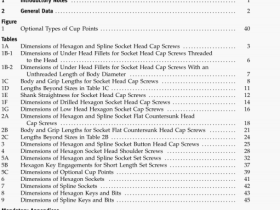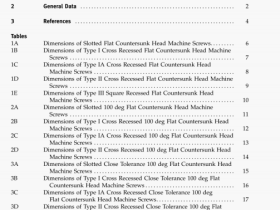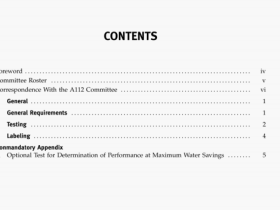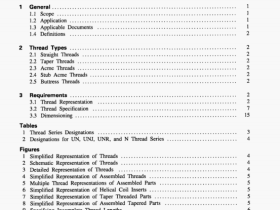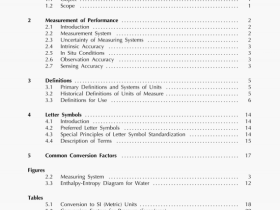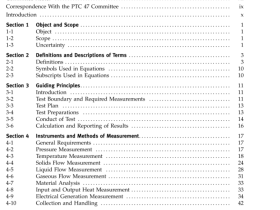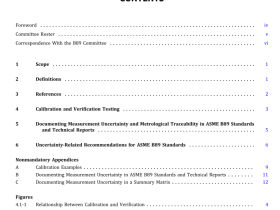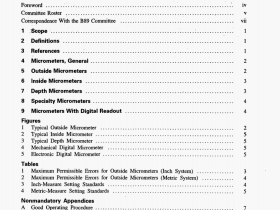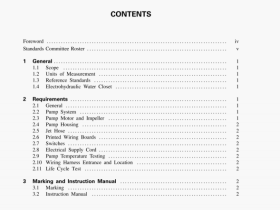ASME B31.5-2001 pdf download

ASME B31.5-2001 pdf downlocondenser: that part of a refrigerating system designed to liquify refrigerant vapor by the removal of heat.
condenser coil: a condenser constructed of pipe or tube, not enclosed in a pressure vessel.
design pressure: see para. 501.
engineering design: the detailed design developed from process requirements and conforming to Code requirements. including all necessary drawings and specifications. governing a piping installation.
equipmenl conneclion: an integral part of such equipment as pressure vessels, heat exchangers. and pumps. designed for attachment to pipe or piping components.
evuporalor: that part of a refrigerating system designed to vaporize liquid refrigerant to produce refngeration.
eaporaIor (‘oil: an evaporator constructed of pipe or tube, not enclosed in a pressure vessel.
face of weld: the exIx)scd surface of a weld on the side from which the welding was done.
Jailer melal: metal to be added in making a welded. brazed, or soldered joint.
Jallel weld: a weld of approximately triangular cross section joining two surfaces approximately at right angles to each other in a lap joint, tee joint., corner joint, or socket joint.
full Jillel weld.’ a fillet weld whose size is equal to the thickness of the thinner member joined.
fusion: see weld.
gas ,neial-arc welding (GMA W): an arc welding process wherein coalescence is produced by heating with an arc between a continuous filler metal (consumable) electrode and the work. Shielding is obtained entirely from an externally supplied gas or gas mixture. (Some methods of this process arc called MIG or CO2 welding.)
gas tungsten-arc welding (G7AW): an arc welding process wherein coalescence is produced by heating with an arc between a single tungsten inonconsumahle) electrode and the work. Shielding is obtained from a gas or gas mixture. Pressure may or may not be added. (This process is sometimes called TIG welding.)
gas welding: a group of welding processes wherein coalescence is produced by heating with a gas flame or flames, with or without the application of pressure. and with or without the use of filler metal.
groove weld: a weld made in the groove between two members to be joined.
header: a pipe or tube (extruded cast or fahricated to which a number of other pipes or tubes ait connected.
heat affected zone: that portion of the base metal that has not been melted. but whose mechanical properties or microstructures have been altered by the heal of welding. hraiing. or cutting.
heal transfer component: the pressure containing portion of equipment used for heat transfer including pipes, tubes, coils, or other components and their headers not constructed as pressure vessels (see evaporator coil and condenser coil).
heal treatment
annealing, full: heating a metal to a temperature above a critical temperature and holding above that range for a proper period of time, followed by cooling to below that range.
normalize: a process in which a ferrous metal is heated to a suitable temperature above the transformation range and is subsequemly cooled in still air at room temperature.
siress-relief heal treatment: uniform heating of a structure or portion thereof to a sufficient temperature below the critical range to relieve the major portion of the residual stresses, followed by unifonn cooling.
high side: the parts of a refrigerating system subjected to condenser pressure.
joini design: the joint geometry together with the required dimensions of the welded joint.
joint penetration: the minimum depth a grooc or flange weld extends from its face into a joint, exclusive of reinforcement.
limited charge sy$iem: a system in which, with the compressor idle, the internal volume and total refrigerant charge are such that the design pressure will not be exceeded by complete evaporation of the refrigerant charge.
low side: the parts of a refrigerating system subjected to evaporator pressure.
manual welding: welding wherein the entire welding operation is performed and controlled by hand.
mechanical joint: a joint obtained by joining of metal parts through a positive holding mechanical construction.
